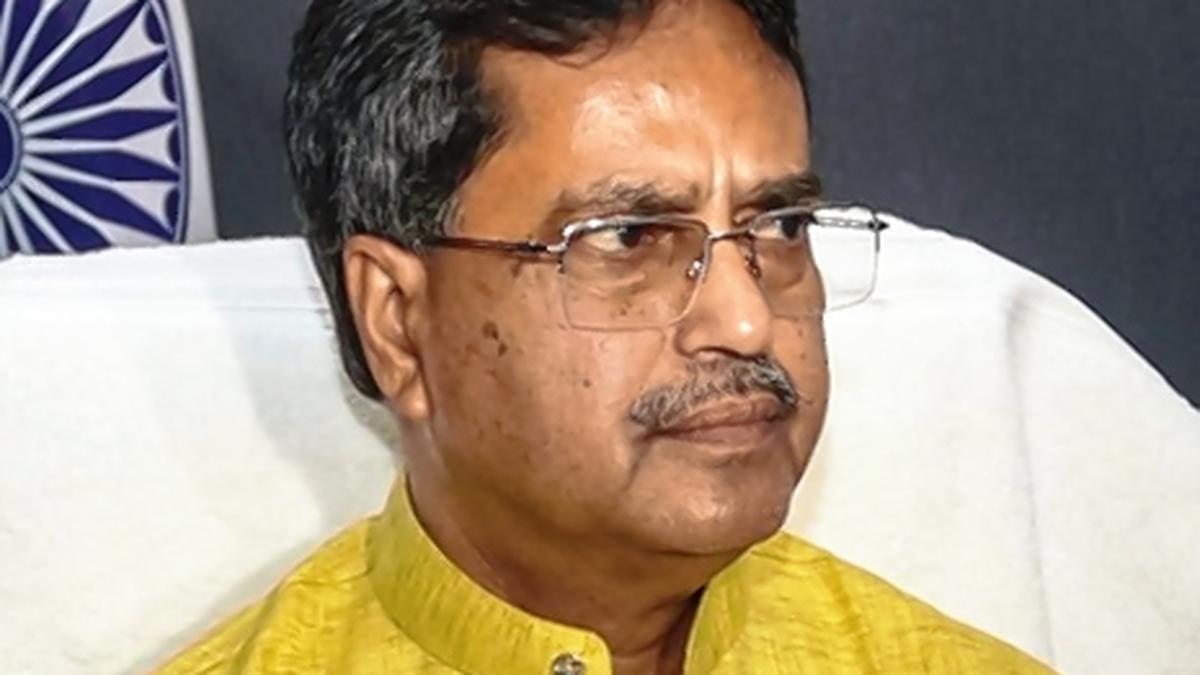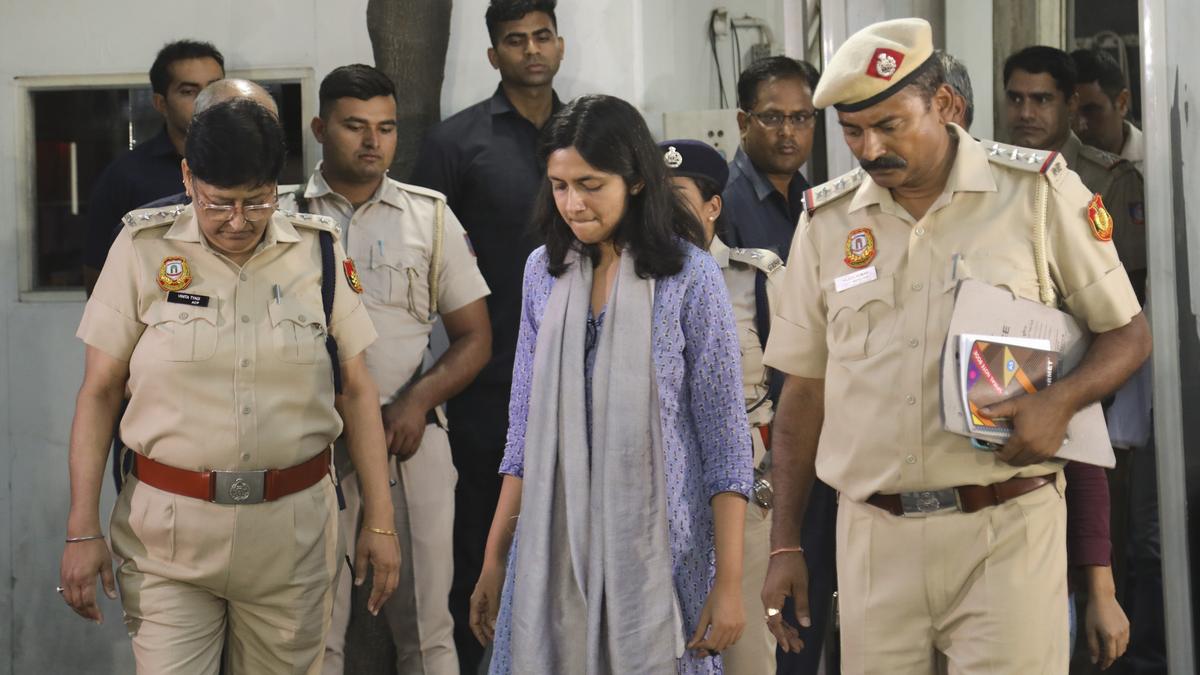The story so far: In a recent ruling, the Supreme Court observed that a Hindu marriage is a ‘samskara’ or sacrament and must be “performed with ceremonies in the proper form” to be recognised under the Hindu Marriage Act, 1955 (HMA).
A bench of Justices BV Nagarathna and Augustine George Masih underscored that the registration of a Hindu marriage only facilitates proof of the marriage but does not provide it legitimacy unless rites and ceremonies envisaged under Section 7 of the HMA such as the saptapadi (the rite where a couple walks around a fire seven times) are complied with.
The dispute
The Court was adjudicating upon a petition filed by a Hindu woman seeking a transfer of divorce proceedings from Muzzafarpur in Bihar to Ranchi in Jharkhand. Amid the divorce proceedings, the couple, who are commercial pilots, jointly applied for a declaration that their marriage was not valid since no customs or rites were performed. They claimed to have solemnised their marriage in Uttar Pradesh based on a “marriage certificate” obtained from Vaidik Jankalyan Samiti — a local religious organisation.
Based on this certificate, they obtained a “Certificate of Registration of Marriage” under the Uttar Pradesh Marriage Registration Rules, 2017 and got their marriage registered under Section 8 of the HMA. They were supposed to marry in accordance with Hindu rituals in October 2022, but differences arose between the couple before any such ceremony could take place. This resulted in the institution of a dowry harassment case by the woman against the man and his family. In March 2023, divorce proceedings under the HMA were initiated by the man in a family court in Muzzafarpur.
The woman argued before the family court that there was no valid marriage since rituals prescribed under the HMA were not adhered to and thus a divorce petition was not maintainable. Accordingly, the couple approached the Supreme Court with a plea to exercise its plenary powers under Article 142 of the Constitution to declare the marriage void. Article 142 empowers the apex Court to do “complete justice” between the parties at times where the law or statute may not provide a remedy.

Supreme Court’s strictures
The Court asserted that there must be proof of performance of the requisite rites under Section 7 of the HMA, including the saptapadi, for a Hindu marriage to be acknowledged legally. It clarified that without these rituals, a marriage cannot be recognised under Hindu law, regardless of the issuance of any marriage certificates.
“Unless the parties have undergone such ceremony, there would be no Hindu marriage according to Section 7 of the Act and a mere issuance of a certificate by an entity in the absence of the requisite ceremonies having been performed, would neither confirm any marital status to the parties nor establish a marriage under Hindu law,” it ruled.
Highlighting that mere registration without the observation of these rites does not confer legitimacy upon a Hindu marriage, the Court further observed, “If a certificate is issued stating that the couple had undergone marriage and if the marriage ceremony had not been performed in accordance with Section 7 of the Act, then the registration of such marriage under Section 8 would not confer any legitimacy to such a marriage.”
Notably, the judges also flagged the growing trend of couples reducing their weddings to mere “song and dance” and “wining and dining” thereby impinging upon the sanctity of the institution. “A marriage (wedding) is not an event for ‘song and dance’ and ‘wining and dining’ or an occasion to demand and exchange dowry and gifts by undue pressure leading to possible initiation of criminal proceedings thereafter. A marriage is not a commercial transaction. It is a solemn foundational event celebrated so as to establish a relationship between a man and a woman who acquire the status of a husband and wife for an evolving family in future which is a basic unit of Indian society,” the Court underscored.
“ A Hindu marriage facilitates procreation, consolidates the unit of family and solidifies the spirit of fraternity within various communities. After all, a marriage is sacred for it provides a lifelong, dignity-affirming, equal, consensual and healthy union of two individuals. It is considered to be an event that confers salvation upon the individual especially when the rites and ceremonies are conducted1. The customary ceremonies, with all its attendant geographical and cultural variations is said to purify and transform the spiritual being of an individual.”Dolly Rani v. Manish Kumar Chanchal (2024)
Accordingly, the Court deprecated the practice of young couples acquiring the “status of being a husband and a wife to each other” in the absence of a valid marriage ceremony under the provisions of the HMA. “In Hindu law, as already noted, marriage is a sacrament or a samskara. It is the foundation for a new family,” the Bench cautioned.
It also pointed out that couples nowadays register their marriages for “practical purposes” such as visa applications without actually conducting a valid wedding ceremony. “Such practices have to be deprecated. What would be the consequences if no such marriage was solemnised at all at a future date? What would be the status of the parties then? Are they husband and wife in law and do they acquire such status in society?” said the Court. It also highlighted the broader consequences of such choices, such as the vulnerabilities which children born outside of wedlock may face.

The ruling also pointed out that under the HMA “a special place is given to rites and ceremonies” besides providing a mechanism for registration of marriages. Therefore, the “critical conditions for the solemnising of a Hindu marriage should be assiduously, strictly and religiously followed”, the Bench said, adding that such a “sacred process cannot be a trivial affair.”
The Court also proceeded to declare the marriage certificate produced in the case as “null and void” after holding that the document was issued in the absence of ceremonial requirements under Section 7 of HMA. It also quashed the divorce petition filed by the man and the dowry case instituted by the woman.
Marriage laws in India
Marriages in India are largely governed by distinct personal laws. For instance, the marriages of Hindus, Christians and Parsis are regulated by the Hindu Marriage Act, 1955, the Indian Christian Marriage Act, 1872, and the Parsi Marriage and Divorce Act, 1936, respectively. Other subjects such as divorce, inheritance, and adoption are governed by a host of other legislations such as the Hindu Succession Act, 1956, the Indian Succession Act, 1925 and the Hindu Adoptions and Maintenance Act, 1956.
Muslims on the other hand are governed by uncodified personal laws as well as the Muslim Personal Law (Shariat) Application Act 1937.
In 1954, the Special Marriage Act (SMA) was enacted to enable couples in inter-faith and inter-caste relationships to seek refuge and marry. It also governs civil marriages (marriages conducted by a government official) and marriages of Indian nationals residing abroad. However, under the SMA, unlike other personal laws, couples intending to get married need to give notice to a Marriage Officer 30 days before the date of marriage. This provision was also challenged before the Supreme Court for being violative of the right to privacy guaranteed under Article 21 of the Constitution. However, the challenge was dismissed by the top Court in 2022.
Also Read:Explained | Challenging the Special Marriage Act, 1954
Essentials for valid solemnisation
Section 7 of the HMA delineates the ceremonies and rituals crucial for the solemnisation of a Hindu marriage. As per the provision, solemnisation can take place in accordance with the customary rites and ceremonies of either party.
Further, sub-section (2) of Section 7 states that where such rites and ceremonies include the saptapadi, i.e., the taking of seven steps by the bridegroom and the bride jointly before the sacred fire, the marriage becomes complete and binding when the seventh step is taken.
Judicial precedents
This is not the first time that the apex Court has expressed concerns over the current state of matrimonial unions in the country. Last month, a bench comprising Justices Surya Kant and PS Narasimha highlighted the disturbing trend of married couples approaching judicial forums without first attempting to live together or reconcile differences. The Bench also reflected upon how shifting societal values has put a “strain” on the institution of marriage.
To effectively determine the standard of proof required to prove the factum of marriage when marriage is denied, the Supreme Court over the years has tried to outline the ceremonies that are indispensable to a valid Hindu marriage. In one of the earliest cases, the Court in Lingari Obulamma v. L. Venkata Reddy (1979) affirmed that performing datta homa and saptapadi are the two ceremonies essential to constitute a valid marriage. Similarly, in Laxmi Devi v. Satya Narayan & Ors (1994),the Court held that since there was no proof that “saptapadi” was performed in the second marriage, no offence of bigamy was committed.

 2 weeks ago
119
2 weeks ago
119




